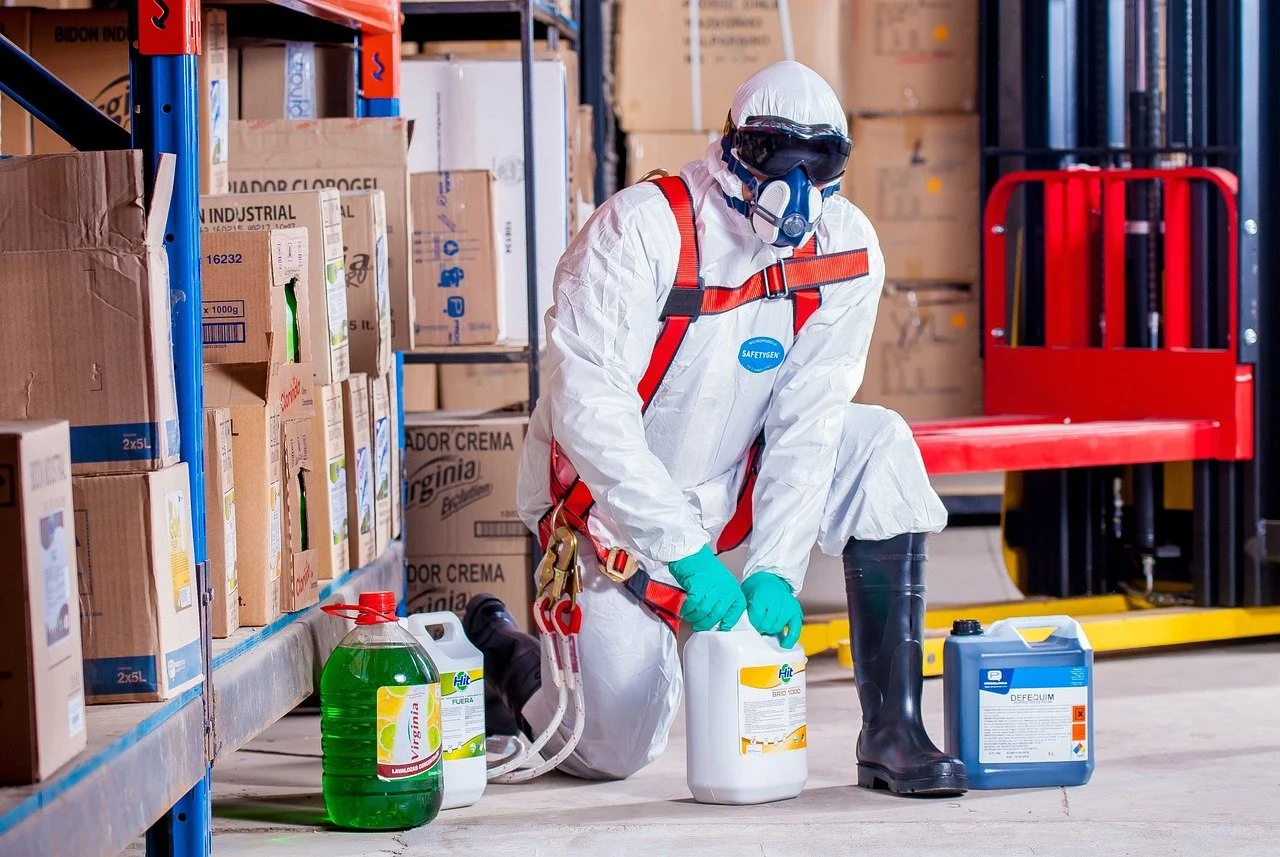What Are the Biggest Sources of PFAS and What’s Being Done About Them?
In recent years, per- and poly-fluoroalkyl compounds (PFAS) have become a major environmental and health hazard. These synthetic chemicals, renowned for their resistance to water and oil, have infiltrated our daily lives through various products and industrial processes. But what exactly are the biggest sources of PFAS, and what measures are being taken to address this escalating issue?
Understanding PFAS: The Silent Intruders
PFAS are a class of man-made compounds that have been used in various industrial and consumer settings since the 1940s. Their particular qualities make them ideal for making nonstick cookware, waterproof textiles, firefighting foams, and other items. However, these qualities make PFAS very persistent in the environment and resistant to breakdown.
The most well-known PFAS chemicals are perfluorooctanoic acid (PFOA) and perfluorooctane sulfonate (PFOS). These compounds have received a lot of attention because of their widespread use and possible harm to human health and the environment.
A U.S. Geological Survey study shows that PFAS chemicals are present in more than 45% of the US’s tap water. The research looked for the presence of 32 different forms of PFAS compounds, and PFOS and PFOA were often discovered. The levels of PFOA and PFOS chemicals were higher than recommended in all samples that had their presence.
The Culprits: Major Sources of PFAS Contamination
Here are some major sources of these persistent forever chemicals:
Industrial Facilities
Manufacturing plants that manufacture or utilize PFAS-containing products make a substantial contribution to environmental pollution. These facilities may release PFAS into the air, water, or soil during production processes or through improper disposal practices.
As Chemical and Engineering News states, thousands of chemical manufacturing sites across the US are likely to be polluted with PFAS. These include facilities that produce paint, plastic materials, soaps, petroleum-based lubricating oils, etc. The industrial sites in the study could be classified into three categories:
Commercial facilities that produced or used PFAS
Airports, train-crash sites, and chemical manufacturing plants, where PFAS containing aqueous film-forming foam (AFFF) was used for firefighting
Waste-handling sites like landfills or sewage treatment plants
Firefighting Foams
PFAS is widely used in the production of firefighting foams, notably aqueous film-forming foams (AFFF). These foams are utilized in firefighting and fire training exercises, releasing PFAS into the environment. This is particularly true in regions near military bases, airports, and industrial facilities.
As found in a PubMed study, AFFF use is a significant source of PFAS. It includes primary precursors, secondary precursors, and perfluoroalkyl acids. There’s also a varying concentration of PFAS chemicals found in AFFF. For instance, primary precursors accounted for 52.6% and 99.5% of PFAS concentration in electrochemical fluorination and fluorotelomer-based AFFF, respectively.
Firefighters and military personnel are most exposed to PFAS from AFFF and are, therefore, more vulnerable to health risks like cancer. According to TorHoerman Law, many of these professionals have taken a legal course for the problems they have suffered due to exposure. They are suing AFFF makers, claiming that they neglected to notify them of potential health concerns.
If you have experienced health problems after being exposed to PFAS-based AFFF, you can file a firefighter foam lawsuit. If you successfully establish liability, you will be entitled to fair compensation. The compensation will include medical expenditures, lost wages, pain and suffering, and other losses.
Consumer Products
PFAS can be found in a variety of consumer products, including nonstick cookware, stain-resistant carpets, waterproof clothes, and food packaging materials. Over time, PFAS may leach from these products into the environment or migrate into food and beverages, contributing to human exposure.
A recent ScienceDirect study found 107 PFAS chemicals in 15 different categories of consumer products. The concentrations found in the products ranged from 2.6 × 10-7 to 29,000 ppm. Textiles had the highest concentration of PFAS among consumer products, followed by household chemicals and cosmetics.
Addressing the Crisis: Remedial Measures and Regulatory Actions
Recognizing the urgency of the PFAS problem, governments, regulatory agencies, industries, and advocacy groups have taken various steps to mitigate contamination. Some key initiatives include:
Regulatory actions: Regulatory agencies, such as the U.S. Environmental Protection Agency (EPA), have taken steps to monitor and regulate PFAS compounds. There have been efforts to limit the use of some PFAS in consumer items. Furthermore, new limits have been set for allowable PFAS levels in drinking water and the environment. The new enforceable contaminant levels for PFOA and PFOS are 4.0 parts per trillion.
Cleanup efforts: Many governments and environmental agencies prioritize remediation of PFAS-contaminated sites. Strategies for cleanup may include soil and groundwater remediation, containment measures, and the implementation of treatment technologies to remove PFAS.
Alternative chemicals: Efforts are underway to develop and promote PFAS-free alternatives in various industries, including firefighting, textiles, and food packaging. Research and development initiatives aim to identify safer alternatives without sacrificing performance or functionality.
Public awareness and education: Increasing public understanding of the hazards associated with PFAS exposure is critical for promoting informed decision-making and generating demand for safer practices. Educational campaigns and outreach efforts are vital in empowering communities to take action against PFAS contamination.
International cooperation: Given the global nature of the PFAS problem, international cooperation and collaboration are essential for addressing contamination on a larger scale. Initiatives like the Stockholm Convention on Persistent Organic Pollutants help governments coordinate their efforts to reduce PFAS and other persistent organic pollutants.
Frequently Asked Questions
Who is the largest producer of PFAS?
The major producer of PFAS (per- and poly-fluoroalkyl compounds) varies depending on the kind of PFAS chemical. Historically, big chemical corporations like 3M, DuPont, and Chemours have significantly produced PFAS chemicals. These compounds have been widely employed in various items because of their unique qualities, such as water, grease, and stain resistance.
Where are PFAS most usually found?
Due to their broad usage and persistence, PFAS are the most frequent contaminants in the environment. They can pollute water, soil, and air. Firefighting foam used on military bases, airports, and firefighting training facilities is among the most common causes of PFAS pollution. Furthermore, industrial facilities that make or utilize PFAS-containing goods and landfills where these items are disposed of might contribute to environmental pollution.
What is the substitute for PFAS?
In response to rising concerns about the environmental and health effects of PFAS, attempts have been made to discover alternatives to these chemicals. Alternatives such as fluorine-free chemicals and materials are being investigated in various sectors. For example, firefighting is trending toward fluorine-free foams that effectively extinguish fires without PFAS.
Where are the greatest PFAS concentrations found?
The highest quantities of PFAS are frequently found near facilities where they are produced or utilized extensively. This includes locations near industrial sites, military bases, and airports where PFAS-containing firefighting foams were utilized in training exercises or during emergencies. These sites may have severe groundwater, surface water, and soil pollution, creating concerns for human health and the ecosystem.
To conclude, the prevalence of PFAS contamination represents a formidable environmental and public health challenge that demands urgent attention and concerted action. By knowing and addressing the significant sources of PFAS contamination, we can work towards mitigating its impacts and creating a sustainable future. Through regulatory reforms, technological innovation, and public awareness, we can confront the PFAS conundrum head-on.





